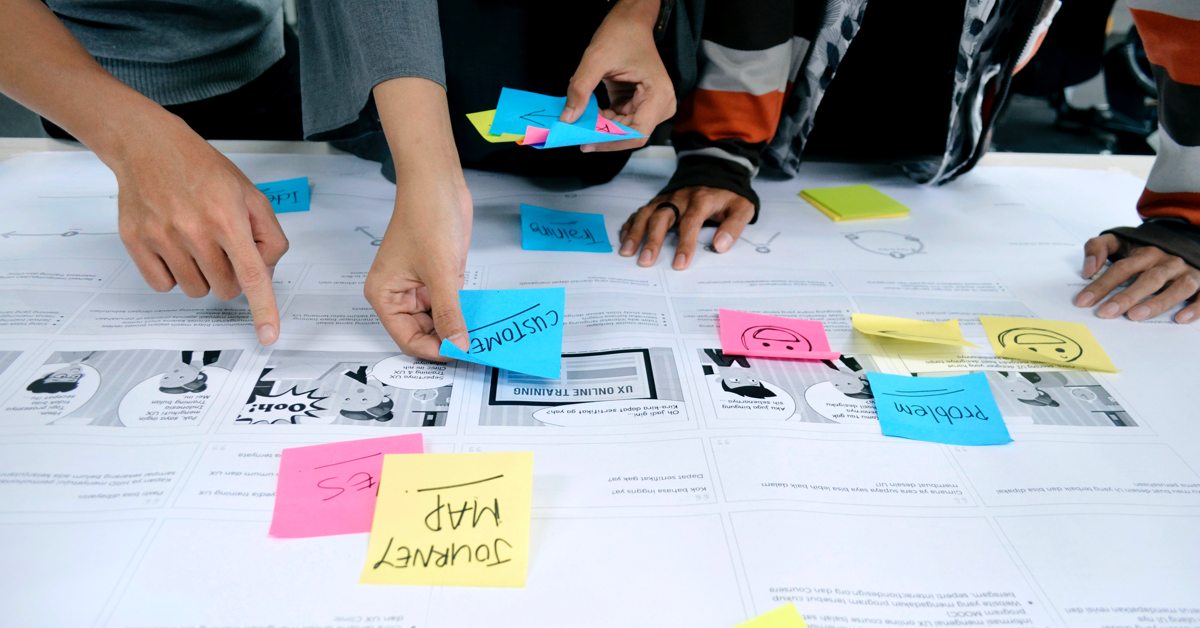Tag: problem definition
-

7 First Principles Thinking Exercises For UX Designers
PRO INSIGHT Design Thinking is an incredible tool for identifying and solving complex human problems. But First Principles Thinking is an approach to logical reasoning that will pay dividends in all areas of life. Especially in solving complex technical problems, where a systematic analysis is really the only way to find a solution. The designer…
-

How To Use ChatGPT For First Principles Thinking In UX
PRO INSIGHT Chat GPT shouldn’t replace our own analysis and evaluation. But it can act as an assistant to expand our ideas, challenge us, and encourage us to think logically. In that sense, it’s like a super power. But the power comes from the combination of Human and Ai. Not from abdicating completely. If you…
-

How To Use First Principles Thinking For UX Designers
PRO INSIGHT In order for UX Designers to become UX Design Leaders, they must develop their thought leadership skills. One of the best ways to do that, is to practice First Principles Thinking. By reducing a problem down to it’s component parts and challenging assumptions, you gain a clarity that allows you to develop innovative…
-

10 Ways To Quickly Find UX Issues In Your Project
Discovering and resolving user experience (UX) problems early can save time, resources, and enhance user satisfaction significantly. But how do you quickly spot these hidden gremlins lurking in your designs? Here are ten quick-fire techniques to uncover and fix potential UX issues before they escalate. 1. The Inversion Method Flip your objectives on their head.…
-

How To Apply The Double Diamond To Any UX Project
As fresh-faced UX designers graduate from their bootcamps and step into the professional world, they often face a reality check. The industry operates differently from what they’ve learned in the classroom, and applying a one-size-fits-all process to real-world projects with unique challenges and limitations can be overwhelming. To navigate this complex landscape, it’s essential to…
-

12 UX Discovery Questions You Need to Ask
Better questions lead to a deeper understanding of the problem and more informed design solutions. It only takes one question to spark a whole new world of thought and inspire a whole new way of thinking that might otherwise go unnoticed. Here are 12 valuable questions you can ask during the discovery phase of your…
-

UX Research 101: Learn the Basics of UX Research
You have no way of knowing what will resonate with your audience if you don’t conduct user research. Proper user research can decrease the risk of wasting time, money, and resources. It’s also the surest way to design products and services that people love. In this article, we’ll give an overview of UX Research basics…
-

7 Steps To Create A Mental Model Diagram In UX Design
Mental models are the ways that people understand, reason, and solve problems. They’re based on past experiences, knowledge, beliefs, and assumptions. They’re often referred to as a small scale model that we carry around in our heads about how the world works. In UX design, mental models help us to create products that match how…
-

How To Get Better At UX Strategy: 14 Practical Tips
Before we get started, I want to give you a solid, actionable takeaway, that I know will level up your understanding of strategy and set you in the right direction. So before you go any further, have a read of the first section and take a few minutes to answer the questions. What’s the One…
-

A Simple Guide to Hierarchical Task Analysis
Hierarchical Task Analysis is used to break complex tasks down into smaller, more manageable parts. It’s useful for UX Designers because it provides a structured and systematic method for understanding the tasks and goals of the users. This article will discuss how to conduct a Hierarchical Task Analysis and some best practices to apply to…
-

The 5 Whys in Design Thinking and How to Use Them
Looking to get to the root of a problem? The five whys is an investigative process that delves into cause-and-effect relationships, providing insight and solutions. By asking “why” up to 5 consecutive times, you can uncover hidden patterns in the problem area – revealing its fundamental nature for effective resolution. 5 reasons to use the…
-

How to Define in Design Thinking
In the Define stage of Design Thinking, we set the direction for our project and make decisions about our focus. Some of the considerations we make are: We make these decisions by analyzing our research findings and organizing the data into personas, storyboards, journey maps, and an actionable problem statement. In this article, we’ll explore…